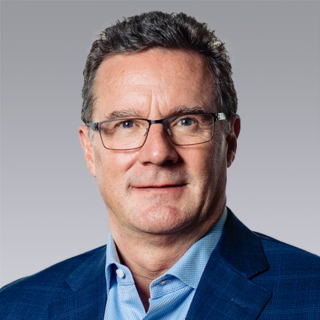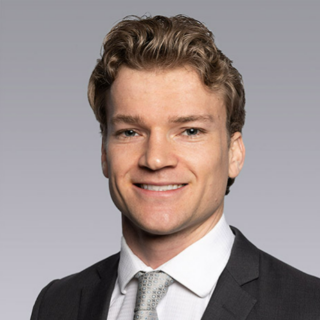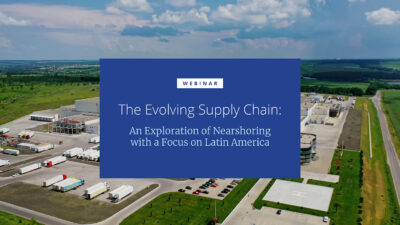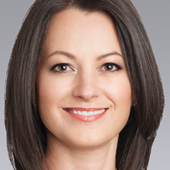In October, the Colliers Tenant Advisory Council (TAC) brought together tenant-focused experts and clients in Miami for its Annual Event. The conference provides a platform for networking, forging meaningful connections, and participating in a thought-provoking program, that focused on navigating commercial real estate decisions in today’s changing environment.
Florida’s Resilience and Ongoing Opportunity
Laura DiBella, Former Florida Secretary of Commerce and President and CEO of Enterprise Florida, delivered a keynote address filled with valuable insights and a glimpse into the region’s prospects. One recurring theme was the resilience of Florida’s economy. Despite some slowing, it’s not stopping, driven largely by the state’s seaports, aerospace activity, and expanding infrastructure in several key markets.
Miami, in particular, stands out with its unique business landscape, attracting heavy hitters and showing signs of continued growth. An obvious tourist destination, Orlando has positioned itself for growth through new connections like the Brightline, and its airport will likely surpass Miami in size and passengers. Jacksonville is poised for growth in the space infrastructure sector, further solidifying Florida’s position as a leader in this industry. Promising investment areas in the Panhandle, including Port of Panama City, Port St. Joe, and the Bay County aerospace cluster, are predicted to drive significant growth. Fort Pierce is also identified as a prime investment area.
LATAM Overview
Juan Gallardo, Colliers’ Client Solutions Executive Vice President for LATAM, provided a comprehensive view of the company’s presence in Latin America. LATAM’s economy had a record year in 2022, and 2023 is projected to be even better primarily driven by the continued trend towards nearshoring. LATAM companies are flocking to Florida, especially Miami, for several key factors including favorable time zones, frequent flights, and a diversity of spoken languages. Other key drivers include ongoing geopolitical situations, changing tariffs, concerns about labor costs and the pandemic.
The State of Flex Work
Peter Leyburn and Patrick “Paddy” Kennedy delivered a presentation on Global SmartFlex, a Colliers’ advisory platform supporting clients on their Flex portfolios. Colliers’ SmartFlex initiative aims to expand its share of the flex space market by providing in-house capability, quick turnaround reports for clients, and the expertise of flex specialists.
Peter and Paddy discussed the current flexible workspace landscape, emphasizing three overarching themes in today’s flex: the fragmented market, changing trends in transaction size, and the integration of flexible spaces into assets as landlords are now designing buildings to include designated flex square footage. Historically, flex locations were used by startups, which is still the case, but now more blue-chip occupiers are utilizing flex locations for swing space.
Beachside Chat: The South Florida Market
Colliers’ Jonathan Kingsley and Stephen Rutchik provided a snapshot of the South Florida market, highlighting its high population density and growing office space demand. There are 6.2 million people living in the Miami-Fort Lauderdale-Palm Beach MSA, making it the sixth-highest density in the United States. Since 2020, the region has seen an acceleration of residential growth and new office development. Miami currently has the third-highest average rental rate in the U.S.
The region is home to many Fortune 500 companies and corporate headquarters, with financial services and tourism driving economic growth. However, challenges, such as sea-level rise and developing the overall infrastructure to support the pace of growth also pose concerns.
Interactive Discussion: Developing Impactful Business Relationships in a World of Constant Change
Following the Beachside Chat, Colliers’ Michael Davidson and Chris Zlocki joined a conversation with Alon Zaibert of AFZ Consulting, focused on people, space, and place. They delved into the evolving dynamics of office space requirements and stressed the importance of expanding discussions beyond the c-suite to include quarterly thinkers and analytics teams.
They also highlighted key takeaways for the brokers in attendance, discussing that experienced professionals are beginning to retire, making it essential to find a reliable real estate partner. Clients may need help they’re not explicitly asking for, so listening to their challenges can lead to future opportunities. The discussion stressed the importance of human connections, as clients will trust brokers who were there when needed, even if it didn’t immediately lead to a deal. Additionally, nurturing and mentoring new workers entering the workforce is crucial.
The interactive part of the session involved a “Change Blueprint Workshop.” Participants were divided into broker and client groups, and they engaged in a hands-on case study exercise to create a comprehensive blueprint for a company. This exercise entailed analyzing the current state, envisioning an ideal future, and devising actionable solutions.

 Sheena Gohil
Sheena Gohil

 Martin Woodrow
Martin Woodrow Chris Zlocki
Chris Zlocki

 Bret Swango, CFA
Bret Swango, CFA
 Stephanie Rodriguez
Stephanie Rodriguez